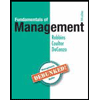Challenges faced by PT in recent years PT faced the following challenges: Weak sales growth: PT's overall sales growth was weak, both in Port of Spain and in the national market outside Port of Spain. This was due to a number of factors, including increasing and intensified competition, as well as the regional characteristics of consumer tea products. Difficulty in expanding its national market: PT was the number one tea company in Port of Spain, but it still faced difficulties in expanding its national market. This was due to a number of factors, including the strong brand loyalty of consumers in other regions, as well as the logistical challenges of distributing tea to remote areas. Inefficient resource allocation: PT had eight brands and three types of tea, which prevented efficient resource allocation. This was because it was difficult to successfully position any one brand in the market with so many different brands to manage. Hazy organizational structure: PT's organizational structure lacked a clear definition of duties and responsibilities. This made it difficult for employees to understand their roles and responsibilities, and it also made it difficult to coordinate and manage the company's operations effectively. Factors in the internal and external environment that led to those challenges Internal factors: Varied brand portfolio: PT had a varied brand portfolio, which made it difficult to position any one brand successfully in the market. Hazy organizational structure: PT's organizational structure lacked a clear definition of duties and responsibilities, which made it difficult to coordinate and manage the company's operations effectively. External factors: Increasing and intensified competition: The tea industry in Port of Spain was becoming increasingly competitive, with new entrants and established players alike vying for market share. This made it difficult for PT to maintain its position as the number one tea company in the city. Regional characteristics of consumer tea products: Consumer tea products had strong regional characteristics, which made it difficult for PT to expand its national market. Consumers in other regions were loyal to their local brands, and it was difficult to persuade them to switch to PT's products. 1. If you were Phillip King, chairman of PT, what recommendations – at least four (4), would you make to improve company performance and address the challenges outlined above. Provide clear justifications for your reasons .
Challenges faced by PT in recent years
PT faced the following challenges:
Weak sales growth: PT's overall sales growth was weak, both in Port of Spain and in the national market outside Port of Spain. This was due to a number of factors, including increasing and intensified competition, as well as the regional characteristics of consumer tea products.
Difficulty in expanding its national market: PT was the number one tea company in Port of Spain, but it still faced difficulties in expanding its national market. This was due to a number of factors, including the strong brand loyalty of consumers in other regions, as well as the logistical challenges of distributing tea to remote areas.
Inefficient resource allocation: PT had eight brands and three types of tea, which prevented efficient resource allocation. This was because it was difficult to successfully position any one brand in the market with so many different brands to manage.
Hazy organizational structure: PT's organizational structure lacked a clear definition of duties and responsibilities. This made it difficult for employees to understand their roles and responsibilities, and it also made it difficult to coordinate and manage the company's operations effectively.
Factors in the internal and external environment that led to those challenges
Internal factors:
Varied brand portfolio: PT had a varied brand portfolio, which made it difficult to position any one brand successfully in the market.
Hazy organizational structure: PT's organizational structure lacked a clear definition of duties and responsibilities, which made it difficult to coordinate and manage the company's operations effectively.
External factors:
Increasing and intensified competition: The tea industry in Port of Spain was becoming increasingly competitive, with new entrants and established players alike vying for market share. This made it difficult for PT to maintain its position as the number one tea company in the city.
Regional characteristics of consumer tea products: Consumer tea products had strong regional characteristics, which made it difficult for PT to expand its national market. Consumers in other regions were loyal to their local brands, and it was difficult to persuade them to switch to PT's products.
1. If you were Phillip King, chairman of PT, what recommendations – at least four (4), would you make to improve company performance and address the challenges outlined above. Provide clear justifications for your reasons .
Step by step
Solved in 4 steps









